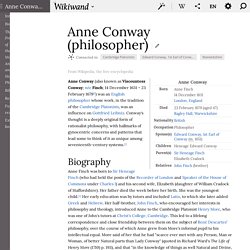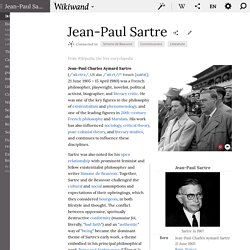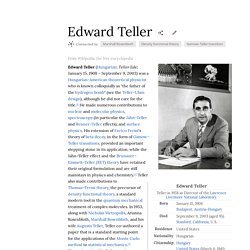

Wikiwand. Wikipedia. John Gray (philosopher) Gray has written several influential books, including False Dawn: The Delusions of Global Capitalism (1998), which argues that free market globalization is an unstable Enlightenment project currently in the process of disintegration; Straw Dogs: Thoughts on Humans and Other Animals (2003), which attacks philosophical humanism, a worldview which Gray sees as originating in religions; and Black Mass: Apocalyptic Religion and the Death of Utopia (2007), a critique of utopian thinking in the modern world.

He formerly held posts as lecturer in political theory at the University of Essex, fellow and tutor in politics at Jesus College, Oxford, and lecturer and then professor of politics at the University of Oxford. The term agonistic liberalism appears in Gray's 1995 book Isaiah Berlin. Gray uses this phrase to describe what he believes is Berlin's theory of politics, namely his support for both value pluralism and liberalism.
Anne Conway (philosopher) In 1651, she married Edward Conway, later 1st Earl of Conway, and in the following year More dedicated his book Antidote against Atheism to her.

In 1658, Anne gave birth to her only child, Heneage Edward Conway, who died of smallpox just two years later. Her husband was also interested in philosophy and had himself been tutored by More, but she went far beyond him in both the depth of her thought and the variety of her interests. Sturm und Drang. This article needs additional citations for verification.

Please help improve this article by adding citations to reliable sources. Unsourced material may be challenged and removed.Find sources: "Sturm und Drang" – news · newspapers · books · scholar · JSTOR (January 2017) (Learn how and when to remove this template message) The philosopher Johann Georg Hamann is considered to be the ideologue of Sturm und Drang; other significant figures were Johann Anton Leisewitz, Jakob Michael Reinhold Lenz, H.
L. Jean-Paul Sartre. Biography Early life Jean-Paul Sartre was born on 21 June 1905 in Paris as the only child of Jean-Baptiste Sartre, an officer of the French Navy, and Anne-Marie (Schweitzer).[11] His mother was of Alsatian origin and the first cousin of Nobel Prize laureate Albert Schweitzer, whose father Louis Théophile was the younger brother of Anne-Marie's father.[12] When Sartre was two years old, his father died of an illness, which he most likely contracted in Indochina.

Anne-Marie moved back to her parents' house in Meudon, where she raised Sartre with help from her father Charles Schweitzer, a teacher of German who taught Sartre mathematics and introduced him to classical literature at a very early age.[13] When he was twelve, Sartre's mother remarried, and the family moved to La Rochelle, where he was frequently bullied.[14] In 1929 at the École Normale, he met Simone de Beauvoir, who studied at the Sorbonne and later went on to become a noted philosopher, writer, and feminist. World War II. Moloch. The biblical name of a Canaanite god associated with child sacrifice. 18th-century depiction of the Moloch idol (Der Götze Moloch mit 7 Räumen oder Capellen.

"The idol Moloch with seven chambers or chapels"), from Johann Lund's Die Alten Jüdischen Heiligthümer (1711, 1738). Moloch[a] is the biblical name of a Canaanite god associated with child sacrifice. The name of this deity is also sometimes spelled Molech, Milcom, or Malcam. The name Moloch results from a dysphemic vocalisation in the Second Temple period of a theonym based on the root mlk, "king". Rabbinical tradition depicted Moloch as a bronze statue heated with fire into which the victims were thrown. Otto Eissfeldt in 1935 argued that mlk was not to be taken as a theonym at all but as a term for a type of fire sacrifice, and that *lĕmōlek "as a molk-sacrifice" had been reinterpreted as the name of a Canaanite idol following the Deuteronomic reform under Josiah (r. 640–609 BC).
Name Biblical texts Masoretic Molek. Edward Teller. Edward Teller (Hungarian: Teller Ede; January 15, 1908 – September 9, 2003) was a Hungarian-American theoretical physicist who is known colloquially as "the father of the hydrogen bomb" (see the Teller–Ulam design), although he did not care for the title.[1] He made numerous contributions to nuclear and molecular physics, spectroscopy (in particular the Jahn–Teller and Renner–Teller effects), and surface physics.

His extension of Enrico Fermi's theory of beta decay, in the form of Gamow–Teller transitions, provided an important stepping stone in its application, while the Jahn–Teller effect and the Brunauer–Emmett–Teller (BET) theory have retained their original formulation and are still mainstays in physics and chemistry. Teller also made contributions to Thomas–Fermi theory, the precursor of density functional theory, a standard modern tool in the quantum mechanical treatment of complex molecules. Teller was born in Hungary and emigrated to the United States in the 1930s. Wikipedia. Commons. Wikiversity. Wikiquote. Wikisource. Wikitonary.